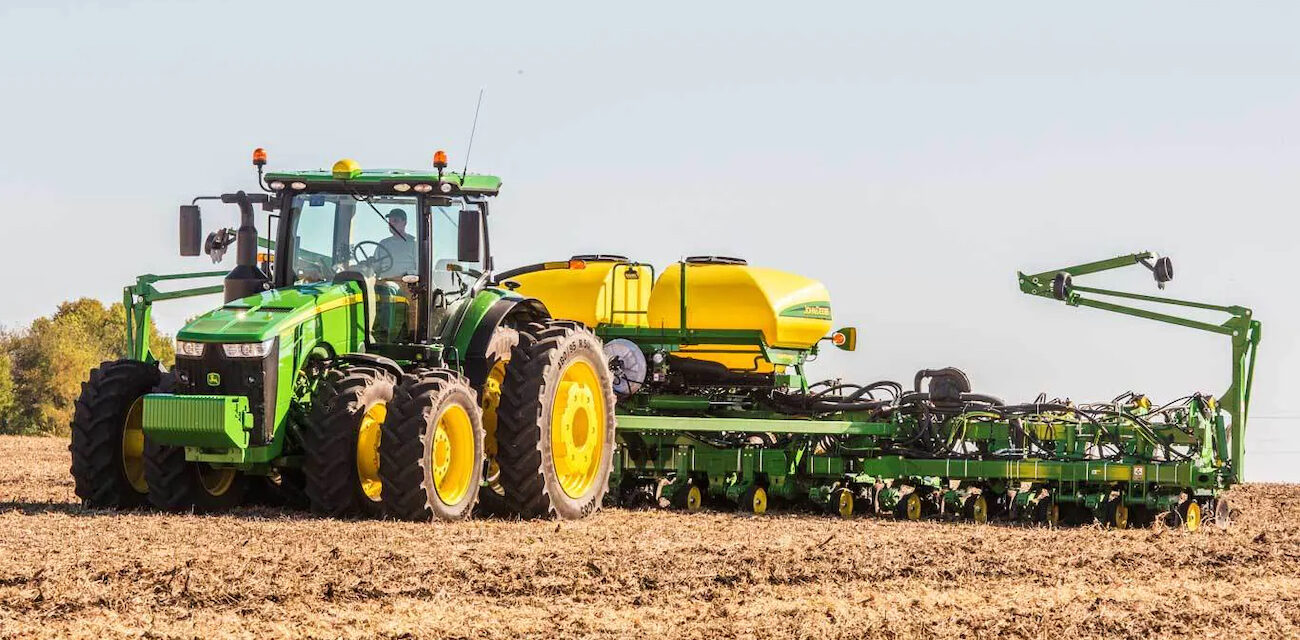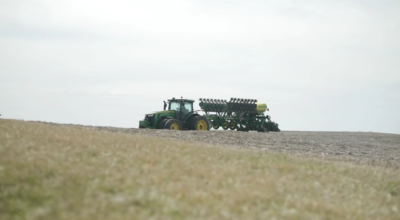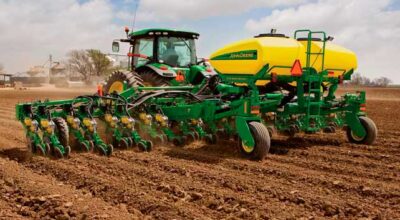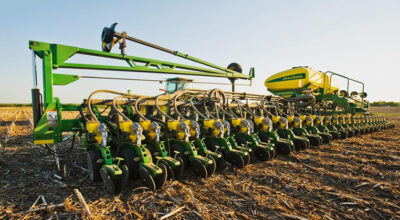If you’re on the hunt for a planter that can make the planting season a breeze, John Deere has several options to choose from to make your job easier. The John Deere 1790 Planter is one example of a machine that can increase efficiency and productivity while planting, with exclusive features that make it one of the best options on the market. From its split-row design to its maneuverability, the John Deere 1790 planter has an ample amount to offer to its operators out in the field.
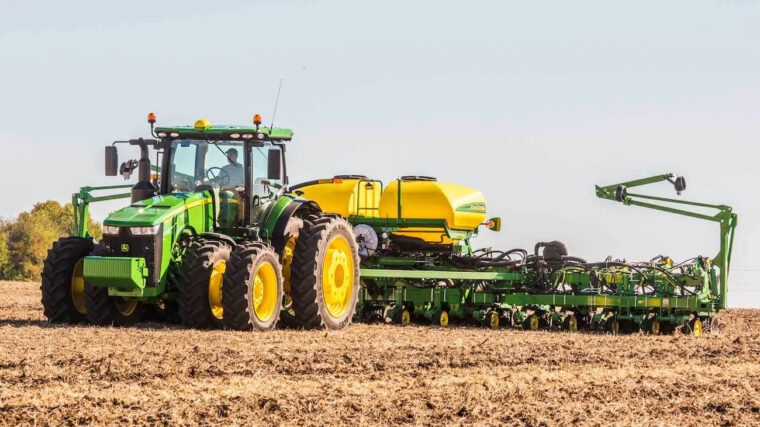
What is the John Deere 1790?
The John Deere 1790 is a split-row planter, designed for agricultural producers who are serious about healthy crops and high yields. Operators can plant several rows of different types of crops with this planter, reducing the need for multiple pieces of equipment. The John Deere 1790, in particular, is also available in five different configurations to suit the specific planting needs of customers.
What Can the John Deere 1790 Do?
With the John Deere 1790, operators no longer have to worry about transportability. With a standard transport width of 12 feet wide (on the 12-row and 16-row variations), this planter is easy to maneuver. It also includes features such as the Pro-Series XP™ row unit and a 420-gallon fertilizer tank that increase efficiency during the workday.
Multiple Plantings
Operators can handle multiple plantings while using the John Deere 1790 thanks to its split-row design. It’s simple to switch from a 30-inch row configuration to a 15-row configuration to handle different sowing areas across a field. All operators need to do is select a switch on the frame control box to activate the selective control valve (SCV), and they’ll be ready to take on any of their planting tasks with this machine.
Monitoring Capabilities
With the SeedStar monitoring system, owners of the John Deere 1790 planter can use their display to keep an eye on machine operation throughout the workday. This system allows users to review real-time data as the equipment runs, giving insight into where improvements can be made to boost efficiency. The AccuCount seed tube sensors on the planter also provide information on accuracy to help users fine-tune their operation.
Automatic Fertilizer Application
The John Deere 1790 can be equipped with a 420-gallon, frame-mounted fertilizer tank. While it cannot be added to the 40-foot planter, there is a hitch available to give customers the option to pull fertilizer in a cart or tank.
What Are the Important Features of the John Deere 1790?
As an agricultural producer, it’s critical to understand all of the features of a machine before making the investment. The John Deere 1790 Planter has several features that make it one of the most versatile planters on the market. For this reason, it is an ideal fit for many farmers who are looking to increase productivity during the workday.
Split-Row Configuration
The John Deere 1790 Planter has a split-row design, which means more planting in a shorter amount of time. The precision of the machine also gives operators peace of mind, knowing that their seeds are going exactly where they need to be out in the field with less spills and waste.
Transportability
The 12-row and 16-row versions of the John Deere 1790 planter can be transported at a width of 12 feet. With frame-mounted row cleaners, coulters, and fertilizer openers, the transport width only extends to 13 feet, 4 inches. All variations of the 1790 planter have a height of 12 feet, 5 inches.
Pro-Series XP™ Row Unit Standard
The Pro-Series XP™ row unit comes standard on the 1790 Planter. While the Pro-Series XP looks like the MaxEmerge Plus unit, its functionality is different. Its iron-cast shank is extremely strong, allowing for the utmost precision during seed spacing, even while working on challenging terrain. The Tru-Vee opener blades are also 3.5mm thick, which means increased durability. The row unit itself can be adjusted easily as needed to account for downforce.
Fertilizer Upgrades
For farmers who want to use the John Deere 1790 for fertilizing in addition to planting, the 30-foot version of the planter can be used with a 420-gallon fertilizer tank. It mounts directly onto the frame for convenience. Those who have the 40-foot version of this planter can use an optional hitch to attach a cart or saddle tank for fertilizer.
What Are the Key Specs of the John Deere 1790?
There are several key specs of the John Deere 1790 Planter worth mentioning, as this piece of equipment can help with many tasks during planting season.
Five Row Configurations
The John Deere 1790 comes in five configurations — 12Row30/23Row15, 12Row30/24Row15, 16Row30/31Row15, 16Row30/32Row15, and 24Row20. This accommodates a wide array of customers with various planting needs.
20 in. of Under-Frame Clearance
When the John Deere 1790 planter is folded, it has 20 inches of under-frame clearance. This means operators will have no trouble passing over everything from railroad grades to ditch lines. Maneuverability is never a problem while working with this machine on the farm.
12-ft Transport Width and 12 ft, 5 in. Transport Height
With its base equipment, this planter has a transport width of 12 feet, making it easy to move and maneuver out in the field. All variations of the John Deere 1790 are also 12 feet, 5 inches in height. This means that operators never have to worry about clearance being a problem.
7-in. x 7-in. Steel Frame
The 7-inch-by-7-inch steel frame of the John Deere 1790 is composed of durable steel and designed to stand the test of time. It also has a telescopic hitch and a frame flex of 15 degrees upward and 10 degrees downward. This makes everything from planting to fertilizing easier during the workday.
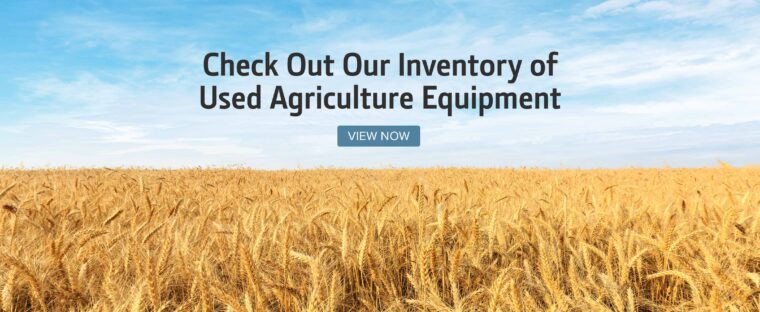
Commonly-Asked Questions About the John Deere 1790
Customers often have questions about agricultural equipment as they shop for the best machinery. Here is what people typically ask about the John Deere 1790 planter, as well as what customers should know about its many features before making their purchase.
How Wide is a John Deere 1790 Planter?
The width of the John Deere 1790 planter depends on which variation the customer purchases. However, this machine maxes out at just 12 feet in width with only its base equipment. When the fertilizer openers, row cleaners, and coulters are mounted onto the John Deere 1790, however, it has a transport width of 13 feet, 4 inches. All 24Row20 machines have a transport width of 12 feet, 8 inches.
What Are the Hydraulic Requirements for a JD 1790 Planter?
The hydraulic requirements for this planter depend on the variety that the customer has purchased. The basic version of the John Deere 1790 Planter needs four SCVs to handle the seed delivery fan and fold system, planter lift, marker operation, vacuum metering system, and seed variable-rate drive. Generally speaking, this planter uses the frame control box and electric solenoids for a series of hydraulic functions.
Final Thoughts About the John Deere 1790
Whether you need a planter to handle a large field or you simply want one with more versatility, the John Deere 1790 planter has many features to offer. An increase in productivity and efficiency comes standard with this machine. Its numerous features, durability, and overall construction make it an ideal piece of equipment for customers seeking a planter to use for years to come. With a split-row design available in five different configurations, there isn’t much the John Deere 1790 can’t do once it’s out on the farm. For this reason, it is a machine worth exploring while looking to invest in new agricultural equipment.
If you have any questions about the John Deere 1790 Planter or its various configuration options, you can contact your local John Deere dealer.
If you enjoyed this post or want to read others, feel free to connect with us on Facebook, Pinterest, Twitter, or Instagram!
